Patient Demographics Patient selection and counseling are paramount to achieving optimal outcomes. Realistic expectations should be established and discussed with the patient before treatment. A full medical history should be obtained, with a focus on dermatological history. The physical examination should evaluate pigmented skin lesions for the possible need for biopsy prior to laser therapy. Any risk factors identified should be discussed with patients as presenting increased risks. Patients with a history of posttraumatic or postinflammatory hyperpigmentation or melasma are at increased risk of hyperpigmentation, as are patients on estrogen therapy. Isotretinoin treatment within the past 6 months is a contraindication to ablative lasers, and these patients should be counseled regarding nonablative lasers. A history of hypertrophic scarring and keloid formation increases scarring risk with deeper laser treatments. Prolonged topical or systemic corticosteroids can delay wound healing and result in areas of atrophic skin healing. Immunocompromised patients, or those who have collagen-vascular disease, can also experience delayed wound healing. A history of perioral or facial herpetic lesions creates a higher risk of recurrence after treatment, and these patients should be started on antiviral prophylaxis. Patients who are currently pregnant or breast-feeding should also avoid laser resurfacing because no studies regarding safety exist. The Fitzpatrick grading system is a six-level system for designating skin reaction to sun exposure.3 Laser therapy is ideal for patients with the lightest skin tones, specifically those with Fitzpatrick skin types I through III. Darker skin types carry a risk of postprocedure dyschromia. Additionally, patients with previous postinflammatory hyperpigmentation or melasma, regardless of skin type, are at increased risk of dyschromia. Lasers are named for the medium that produces the wavelength of laser energy for that specific laser. The laser medium is contained within an optical cavity or resonator and may be a liquid, as in the case of a pulsed dye laser; a solid, as in the case of an erbium:yttrium aluminum garnet (Er:YAG) laser; or a gas, as in the case of the carbon dioxide (CO2) laser. A general laser design produces photons from an energy source that are made to move parallel to the axis of the optical cavity and are repeatedly reflected between opposing mirrors. The summation of this repetitive interaction causes a stimulated emission to be generated. This laser energy is then transmitted to the operator’s handpiece via an articulated tube with mirrors or fiber-optic cable. Clinically, it is helpful to describe the wavelengths of light associated with particular lasers rather than by using brand names. These designations, such as “1,064-nm neodymium:yttrium aluminum garnet (Nd:YAG),” will guide the clinician to the appropriate use and improve documentation and communication. Critical parameters of the laser emission include the wavelength, pulse characteristics, and fluence. The following sections describe various lasers, along with their general physical characteristics and absorption spectra.4 The rhytids, telangiectasias, laxity, and actinic changes associated with photoaging of the skin can be improved with both ablative and nonablative resurfacing technologies.5,6,7,8 The CO2 laser became popular for skin resurfacing in the early 1990s and has been the most widely used laser for ablative resurfacing.9,10,11,12,13 It emits invisible infrared radiation at a 10,600-nm wavelength. This wavelength is primarily absorbed by intracellular and extracellular water, resulting in a number of thermal effects such as tissue necrosis, vaporization, carbonization, and coagulation. In many ways, the dramatic results obtained by the full ablative CO2 laser still represent the “gold standard” by which other resurfacing modalities are compared. However, its wide application has decreased due to the resulting prolonged healing time, prolonged erythema, and an increased risk of hypopigmentation, infection, and scarring. Clinically, CO2 lasers have been applied in the treatment of a variety of cutaneous disorders including age-related photodamage, rhytids, and depressed scars. Since the CO2 laser penetrates deeper, it is more effective in the remodeling of the deeper layers of the dermis, causing the effacement of coarser rhytids. The more recently introduced fractional CO2 laser has gained popularity secondary to its improved risk-to-benefit profile, including significantly decreased recovery time. The use of fractionated CO2 technologies was reported after 2007.14,15,16 Similar to the fractionated erbium technologies that preceded them, fractionated CO2 systems treat cylinders of tissue with laser energy while leaving interspersed areas of untreated tissue. This creates a productive balance between favorable tissue effects, such as correction of epithelial architecture and skin tightening, and any propensity for prolonged healing, erythema, and scarring. Whereas fractional CO2 lasers can be used for fine rhytids, fully ablative treatment is recommended to achieve desired results with deeper rhytids (▶ Fig. 20.1, ▶ Fig. 20.2.) Fig. 20.1 Clinical photographs of patient who underwent 10,600 nm fractional CO2 laser of face for correction of fine rhytids (patient has undergone previous TCA peeling of acne scars). (a,b) Preoperative images; (c,d) Postoperative images. Fig. 20.2 Clinical photographs of patient who underwent single treatment with 10,600 nm fractional CO2 laser of face for correction of fine rhytids and acne scarring (note absence of postoperative hyperpigmentation in spite of Fitzpatrick IV skin tones). (a) Preoperative image; (b) Postoperative image. The erbium laser was introduced for clinical use in the latter part of the 1990s.17,18,19,20,21,22 This laser has the highest absorption coefficient for water among ablative lasers and given its particular tissue interaction characteristics, it is touted to provide many of the benefits of CO2 laser treatment with reduced unfavorable sequelae. This may be related to the favorable thermal relaxation times achievable with the Er:YAG platforms compared to the CO2 platforms.23,24 The fractionated algorithm further improves its therapeutic margin25 and provides the ability to adjust for specific patient skin type and degree of photoaging. Although the result is a more measured one, there is a decreased healing time. The Er:YAG laser has also been shown as less effective compared to the ablative CO2 laser for skin tightening.26 The second-generation erbium lasers possess favorable ablative and coagulation properties that make them effective for skin resurfacing. Skin conditions that can be successfully treated with this laser include rhytids, solar elastosis, dyschromias, and actinic photodamage. Additionally, the erbium laser has been described as more effective in the treatment of superficial dyschromias and other actinic changes in the superficial layers of the skin. The highly successful 1,550-nm fractionated erbium laser expanded the use of erbium lasering for both cosmetic and reconstructive indications.27,28,29,30,31 At this laser wavelength, patients can be offered a modest but significant improvement in texture, rhytids, and superficial lentigines with markedly reduced downtime. However, because the results can be insufficient for a number of clinical conditions, the popularity of the fractionated CO2 platforms continues. Other superficial ablative and nonablative technologies are available for a spectrum of cutaneous applications. These lasers function at 2,790, 1,440, 1,540, 1,550, and 1,064 nm, as well as at other wavelengths.32,33,34,35,36,37 The clinical effect of these lasers and technologies is frequently not as dramatic as with the ablative and fractionated technologies described earlier; however, the science continues to change, and more effective platforms are being developed. Nonlaser skin improvement technologies are also available and include plasma, radiofrequency, ultrasound, and light-based technologies. A full discussion of these technologies is beyond the scope of this chapter, and readers are urged to evaluate those reports. The Nd:YAG laser produces laser energy at a wavelength of 1,064 nm. It will penetrate up to 2 to 3 mm into the dermis, making it useful in the removal of deeper natural and artificial dermal pigmentations. The 1,064-nm wavelength of the Nd:YAG laser also makes it useful for the removal of blue-black tattoos, but it is relatively poorly absorbed by green pigments.38,39,40 When the laser beam is passed through a KTP crystal, the laser energy frequency is doubled and the resultant light wavelength is halved to 532 nm. This wavelength is absorbed more superficially in the skin, making it useful for the removal of benign superficial epidermal pigmentations.41,42 Lentigines are frequently treated along with rhytids while doing ablative resurfacing. In the patient who does not need general ablative resurfacing, such as the younger patient, the lentigines may be treated more directly. If doubt exists about the diagnosis of a lesion, at least one area of the lesion should be biopsied. When one can be confident that the lesion is indeed benign, the Q-switched (QS), frequency-doubled Nd:YAG laser operating at 532 nm can produce good results.43,44,45,46,47 The lightening or removal of traumatic and cosmetic tattoo pigment can be effectively approached with lasers and has similarities to the treatment of naturally occurring pigment lesions. The wavelength of the laser used will depend on the target pigment in the tattoo, and it is advisable that the practitioner (except for the most experienced) use test spots to assess the patient and pigment response before proceeding with treatment of the entire lesion. The QS alexandrite laser at 755 nm, the QS ruby laser at 694 nm, and the QS Nd:YAG laser at 1,064 nm can be effective in the treatment of lighter skinned individuals with a dark blue or black tattoo pigment. In darker skinned individuals (i.e., Fitzpatrick skin types IV–VI), the QS Nd:YAG laser is preferred because the longer wavelength results in a greater degree of epidermal sparing. For tattoos exhibiting red pigment, the QS Nd:YAG laser operating at 532 nm can be used. Green pigment is frequently difficult to treat and best treated with the QS ruby 694-nm laser.48,49,50,51,52 Due to the risk of hyperpigmentation and hypopigmentation, treatment is usually limited to light-skinned individuals (▶ Fig. 20.3, ▶ Fig. 20.4.) Fig. 20.3 Clinical photographs of patient who underwent single treatment with 1064 nm Nd:YAG laser for treatment of traumatic tattooing of left upper lip. (a) Preoperative image. (b) Postoperative image. Fig. 20.4 Clinical photographs of patient who underwent single treatment with 1064 nm Nd:YAG laser for treatment of traumatic tattooing of left cheek and nose and 585 nm pulse dye laser treatment of hypertrophic scars. (a) Preoperative image. (b) Postoperative image. (c) Intraoperative image–Nd:YAG laser use. (d) Intraoperative image–Pulsed dye laser use. Vascular lesions are targeted by a variety of wavelength lasers including the pulsed dye (585–595 nm), the KTP frequency-doubled Nd:YAG (532 nm), and the Nd:YAG (1,064 nm) laser systems.53,54,55,56,57,58,59 The pulsed dye laser was introduced in 1989, and the first version of these lasers emitted light at 577 nm, which corresponds to the oxyhemoglobin absorption spectrum. Current available pulsed dye lasers emit a wavelength of 585 or 595 nm with longer pulse durations. The 585-nm wavelength gives it excellent specificity to hemoglobin with a minimal risk of hyperpigmentation, hypopigmentation, or skin breakdown. In general, the pulsed dye laser is considered to have a reliable safety margin; and for some authors, it has become the treatment of choice for vascular lesions of various sizes, including port-wine stains, telangiectasias, and hemangiomas.60,61,62,63,64,65 The KTP frequency-doubled Nd:YAG (532 nm) laser is usually used for smaller lesions such as spider veins and telangiectasias, and the Nd:YAG (1,064 nm) laser has utility in treating reticular veins.66,67,68 Port-wine stains are the most common childhood vascular malformation and are most effectively treated with the pulsed dye laser.69 These are present at birth and can thicken and darken over time, making treatment most effective when started in the first year of life.70 Port-wine stains that are resistant to treatment can also be addressed with Nd:YAG and alexandrite lasers.71,72 Telangiectasias are also most responsive to pulsed dye lasers, usually requiring two to three treatments.73 The presence of purpura after treatment prognosticates good results. Lasers with longer wavelengths, such as alexandrite and Nd:YAG, can be used for deeper lesions, but they may increase the risk of scarring and ulceration. Certain infantile hemangiomas and pyogenic granulomas have also been treated with laser therapy in an adjunctive fashion, most commonly with pulsed dye lasers. Nd:YAG lasers can be used to assist in treatment of venous malformations when appropriate. Prior to the introduction of these laser technologies, modalities such as waxing and electrolysis had been used for hair removal. Laser technology has now become popular for the temporary and semipermanent removal of hair in both women and men for cosmetic purposes, for general grooming, or as part of the treatment or resolution of hirsutism associated with medical conditions such as polycystic ovary disease. Since the targeted chromophore in laser hair removal systems is the melanin pigment, which is found in the hair shaft and hair follicle epithelium, these lasers are particularly effective. Although laser hair removal was noted to be available in the 1970s, the first Food and Drug Administration (FDA) approval came with the ruby laser in 1996.74 This laser has lost popularity due to the development of other technologies that have improved specificity. Alexandrite lasers operating at 755 nm are among the most popular systems, touted to have improved penetration and the ability to treat Fitzpatrick skin types I through IV.75 The 1,064-nm Nd:YAG laser operating in the long-pulse mode has reported success rates of 70% with five treatments and utility for hair removal even in patients of higher Fitzpatrick skin types.76 Diode lasers are popular solid-state lasers that operate at 800 nm and reduce hair density through photothermal destruction of the melanin-containing portions of the hair follicle. These lasers penetrate deeper into the dermis, necessitating epidermal cooling to minimize epidermal and superficial dermal damage, as well as to provide patient comfort. The diode lasers have shown efficacy rates up to 90% and can be used with Fitzpatrick skin types I through IV.77,78 Patients with dark, coarse hair achieve the most successful outcomes.79 Although it does not represent the laser technologies, intense pulsed light (IPL) has become increasingly popular for hair removal. IPL has shown effectiveness comparable to the ruby laser in several studies and statistical equivalence to other devices such as the diode and the alexandrite lasers.80,81,82 Red hypertrophic scars can be effectively treated using the pulsed dye laser with results that are reliable and comparable to the use of intralesional steroid injections.83 Depressed scars respond quite well to laser resurfacing with both CO2 and erbium lasers. Acne scars are particularly responsive to a combination of subcision and laser resurfacing ▶ Fig. 20.5.84,85 Fig. 20.5 Clinical photographs of patient who underwent treatment with 585 nm pulse dye laser treatment of hypertrophic scars after nasal reconstruction. (a) Design of flap prior to surgery. (b) Immediately postoperative with the flap turned into the nose. (c) Postoperative view demonstrating hypertrophic scar. (d,e) Postoperative images. (f) Intraoperative image of pulsed dye laser in use. There are numerous laser manufacturers offering a variety of laser products that can be used in a facial plastic surgery office (▶ Table 20.1). Some of these products are based on central platforms or main modules that are modified by the addition of different handpieces offering different laser wavelengths and light-based technologies (▶ Fig. 20.6 and ▶ Fig. 20.7). Other laser products have only a single wavelength possible within that one product’s system (▶ Fig. 20.8 and ▶ Fig. 20.9). Reasons for this variability are based on the underlying technologies themselves, the cost of production, and the attainable market prices. Manufacturer Product Modality Wavelength (nm) Applications Sciton Joule Expandable platform BroadBand Light Broadband Light 420 515 560 590 Acne Pigmented lesions Vascular lesions ClearScan ALX Alexandrite laser 755 Hair reduction, vascular lesions, pigmented lesions, rhytids ClearScan YAG Nd:YAG 1,064 Hair reduction, vascular lesions, vein treatment Contour TRL Er:YAG 2,940 Skin resurfacing ProFractional Er:YAG 2,940 Skin resurfacing ProLipo PLUS Nd:YAG 1,064 1,319 Laser lipolysis Pro-V Nd:YAG 1,319 Endovenous ablative therapy ThermaScan Nd:YAG 1,319 Rhytids, scarring Ellman Apex IPL Er:YAG Variable 2,940 Acne, sun damage, pigmented/vascular lesions Skin resurfacing Cheveux Diode 810 Hair removal Cortex CO2 Er:YAG 10,600 2,940 Skin resurfacing, pigmented lesions, scars Skin resurfacing Medley Q-switched Nd:YAG/KTP IPL Er:YAG Diode 1,064/532 Variable 2,940 810 Tattoo removal, pigmented lesions (dark skin) Acne, vascular/pigmented lesions, hair removal Skin resurfacing Hair removal Ruby Q-switched ruby 694 Tattoo removal, pigmented lesions Tri-Lase Q-switched Nd:YAG/KTP Er:YAG 1,064/532 2,940 Tattoo removal, pigmented lesions (dark skin) Skin resurfacing Syneron-Candela Alex TriVantage Q-switched alexandrite Q-switched Nd:YAG 755 532/1,064 Tattoo removal, pigmented lesions Tattoo removal, pigmented lesions Co2re CO2 10,600 Skin resurfacing GentleMax Pro Alexandrite Nd:YAG 755 1,064 Hair removal Hair removal, vascular/pigmented lesions Vbeam Perfecta Pulsed dye laser 585 Vascular/pigmented lesions Cutera Excel V KTP Nd:YAG 532 1,064 Superficial vascular lesions Vascular lesions, scars, rosacea CoolGlide Nd:YAG 1,064 Hair removal Excel Nd:YAG 1,064 Vascular lesions Laser Genesis Nd:YAG 1,064 Facial rhytids Pearl/Pearl Fractional/Pearl Fusion YSGG 2,790 Skin resurfacing VariLite Diode 532/940 Vascular/pigmented lesions, cutaneous lesions Lumenis Multi-Spot Nd:YAG Nd:YAG 1,064 Vascular/pigmented lesions, facial rhytids ResurFX Er:Glass 1,565 Skin resurfacing IPL with Optimal Pulse Technology IPL Variable Hair removal, vascular/pigmented lesions, skin resurfacing, facial scarring, facial rhytids LightSheer ET/DUET Diode 800 Hair removal AcuPulse CO2 10,600 Skin resurfacing, pigmented lesions UltraPulse CO2 10,600 Skin resurfacing, facial scarring QX MAX – 532/585/650/1,064 Tatoo removal, hair removal, pigmented/vascular lesions Alma Harmony series Alma Soprano series Alma Pixel CO2 series AFT Light therapy 300–950 Pigment restoration, acne clearing, vascular lesions, skin rejuvenation, hair removal Harmony Alex 755 nm Alexandrite 755 Hair removal, pigmented lesions High Power Laser QS Q-switched Nd:YAG 532, 1,064 Tattoo removal Cooled Laser 1,064 nm Nd:YAG 1,064 Vascular lesions Laser 1,320 nm Nd:YAG 1,320 Facial rhytids, acne scars Pixel Pro 2,940 nm Er:YAG 2,940 Skin resurfacing Soprano ICE Diode 810 Hair removal Pixel CO2 CO2 10,600 Skin resurfacing Cynosure (formerly Palomar) Acclaim Nd:YAG 1,064 Hair removal, vascular lesions Accolade Q-switched alexandrite 755 Pigmented lesions, tattoo removal Affirm Nd:YAG 1,320, 1,440 Facial rejuvenation, pigmented lesions Apogee Alexandrite 755 Hair removal, pigmented lesions Apogee + Alexandrite 755 Hair removal, pigmented lesions Cynergy Pulsed dye laser, Nd:YAG 585, 1,064 Vascular lesions Elite Alexandrite, Nd:YAG 755, 1,064 Pigmented lesions, hair removal, vascular lesions Elite MPX Alexandrite, Nd:YAG 755, 1,064 Hair removal, pigmented lesions, vascular lesions, photodamage, facial rhytids Elite + Alexandrite, Nd:YAG 755, 1,064 Hair removal, vascular lesions, pigmented lesions, facial rhytids MedLite C6 Q-switched Nd:YAG 532, 1,064 Tattoo removal PicoSure Alexandrite 755 Tattoo removal, pigmented lesions Precision Tx Nd:YAG 1,440 Facial/body sculpting RevLite SI Q-switched Nd:YAG 532, 1,064 Skin resurfacing, tattoo removal, facial rhytids, pigmented lesions SmartSkin CO2 10,600 Skin resurfacing Vectus Sapphire 800 Hair removal Fraxel Fraxel re:pair CO2 fractional 10,600 Skin resurfacing, facial rhytids, pigmented lesions, vascular lesions Dual 1,550/1,927 nm Erbium/Thulium 1,550/1,927 Skin resurfacing, facial rhytids, facial scarring, pigmented lesions/dyschromias Abbreviations: CO2, carbon dioxide; Er:YAG, erbium:yttrium aluminum garnet; Er:YSGG, erbium:yttrium scandium gallium garnet; IPL, intense pulsed light; KTP, potassium titanyl phosphate; Nd:YAG, neodymium:yttrium aluminum garnet; QS, Q-switched. Note: This table shows a partial listing of the variety and multitude of laser products. It is not all-inclusive of products or manufacturers. Fig. 20.6 The Sciton Joule. (Courtesy of Sciton, Palo Alto, California.)
20.2 Laser Technologies
20.3 Lasers for the Treatment of Skin Aging
20.3.1 The CO2 10,600-nm Laser
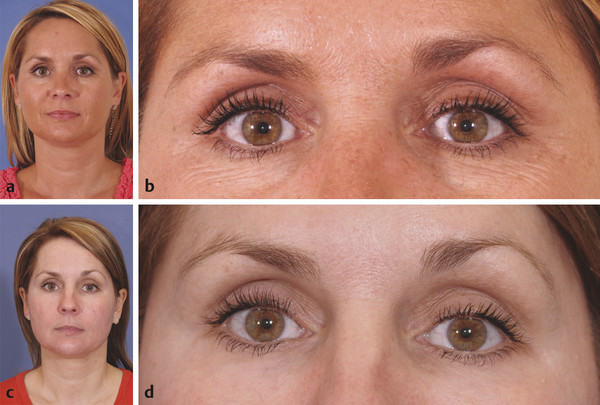
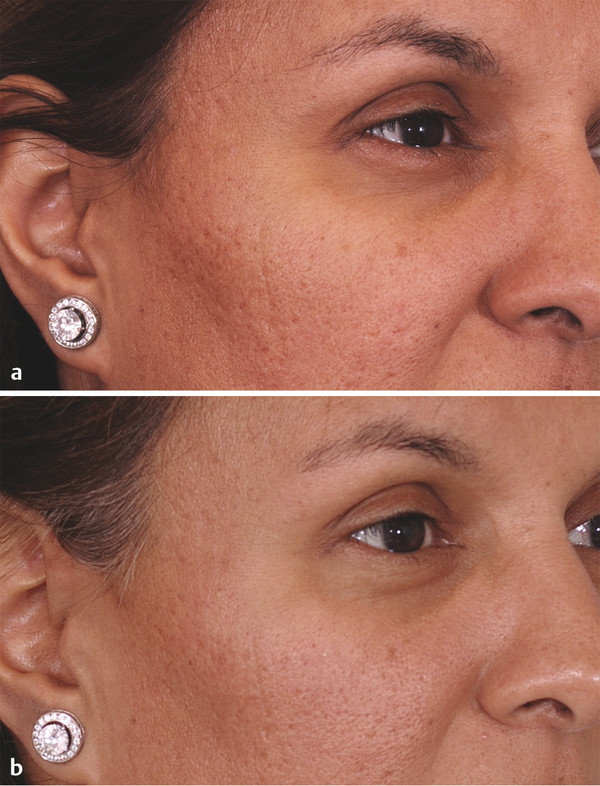
20.3.2 The Er:YAG 2,940-nm Laser
20.3.3 Other Superficial Ablative and Nonablative Lasers
20.4 Lasers for the Treatment of Benign Pigmented Lesions
20.5 Lasers for Tattoo Removal
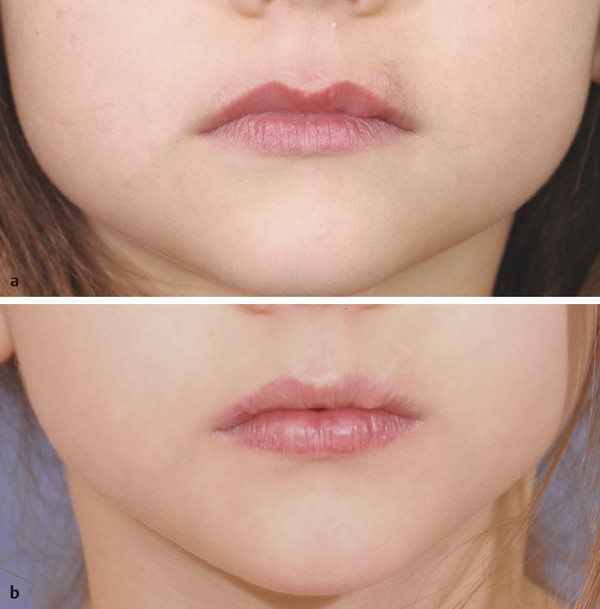
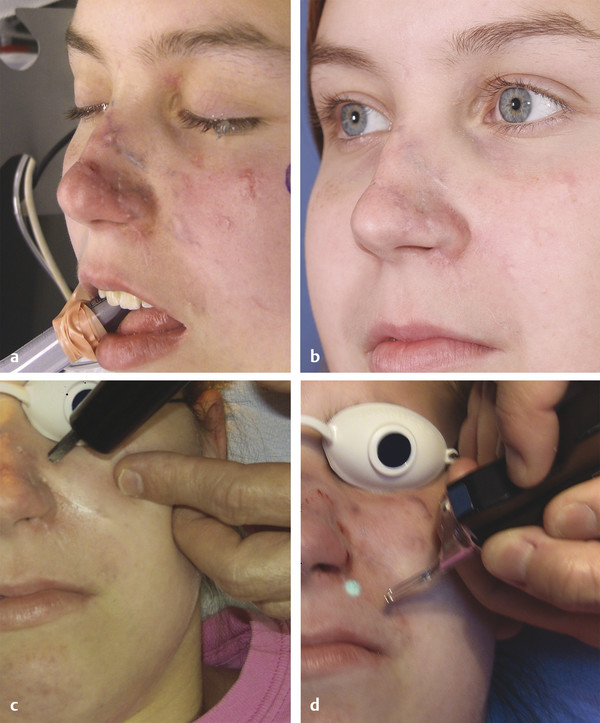
20.6 Lasers for the Treatment of Vascular Lesions
20.7 Lasers for Hair Removal
20.8 Lasers for the Treatment of Scars
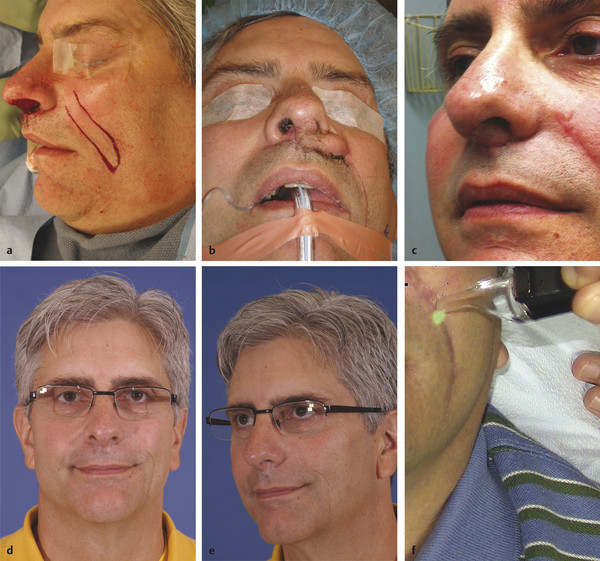
20.9 Available Lasers
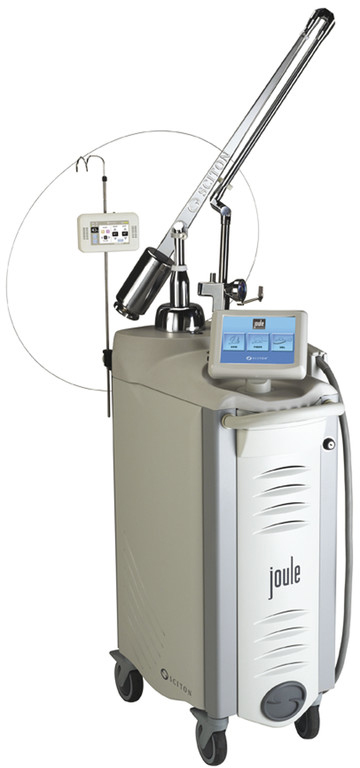
Choosing the Right Laser for Your Practice: A Practical Comparison of Available Lasers
Only gold members can continue reading. Log In or Register to continue

Full access? Get Clinical Tree








